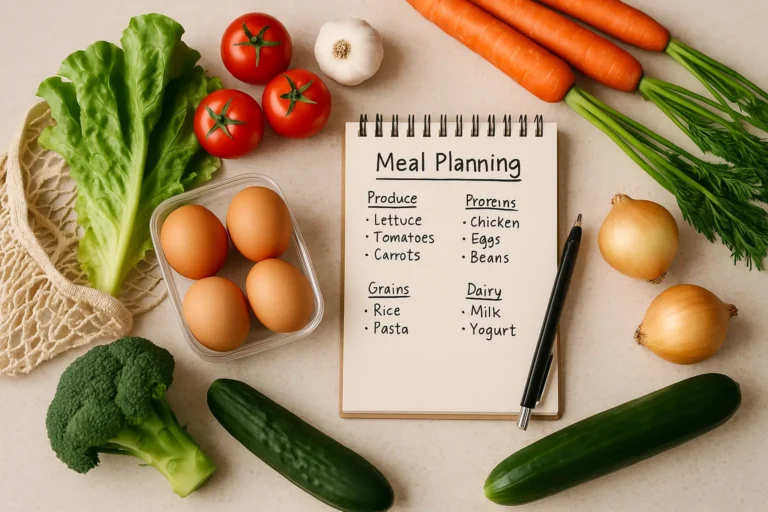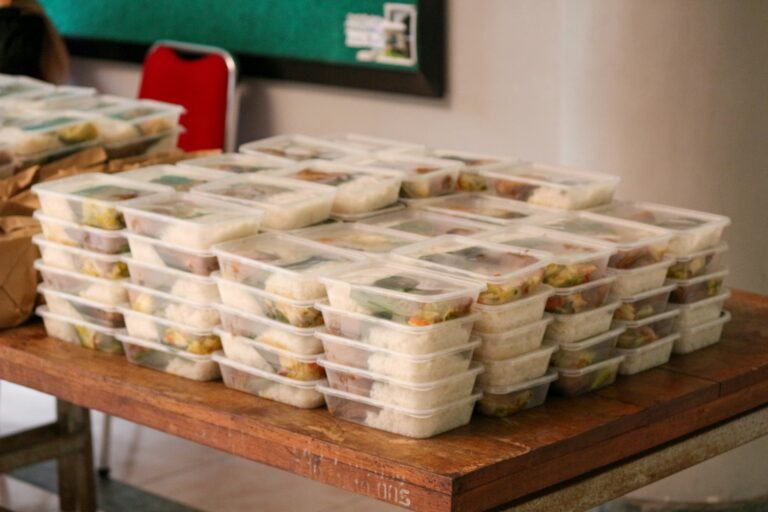🧾 Smart Workweek Meal Planning for Busy Professionals (Save Time, No Microwave Needed)
Intro – You’re Not Lazy, You’re Just Busy
After a long day at work, cooking dinner feels like running a marathon with no medal at the end. 🍝
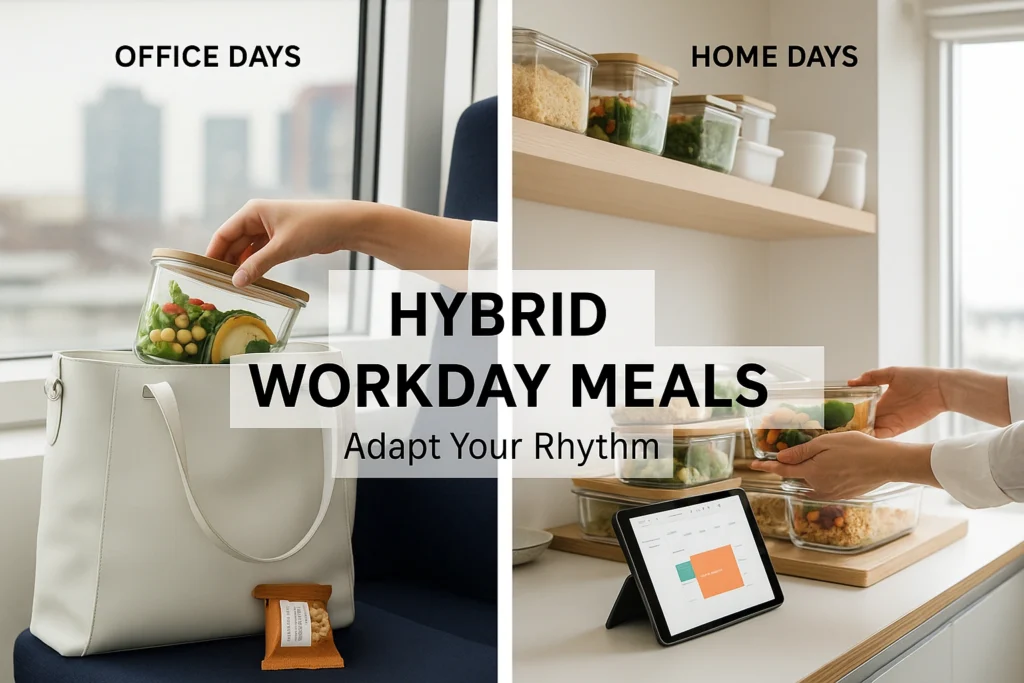
It’s not that you’re lazy — you’re just tired of making decisions. Between deadlines, emails, and “quick” meetings that last an hour, food becomes an afterthought.
That’s why meal planning for busy professionals matters — it helps you save time, eat better, and actually enjoy your evenings again.
When I was working long hours at my old job, I’d come home starving but too drained to cook. I’d scroll through delivery apps, order something I didn’t even want, and regret it halfway through. That was my breaking point — I realized I didn’t need a perfect plan, just a calmer one.
I used to print out perfect weekly meal plans every Sunday — color-coded, labeled, even scheduled by meal times. By Thursday, half of it had collapsed. I’d stare at the plan, feel guilty, and order takeout instead. It took me months to realize: the plan wasn’t the problem — my expectations were.
That’s where meal planning for busy professionals comes in.
It’s not about being a kitchen perfectionist — it’s about making your week flow easier, saving time and money, and avoiding the dreaded “What’s for dinner?” loop.
And no, you don’t have to cook every night or freeze 20 containers of chili. Let’s keep it real.
Plan Around Your Workweek, Not Recipes
Most meal planners start with recipes. Big mistake.
Start with your calendar, not your cookbook.
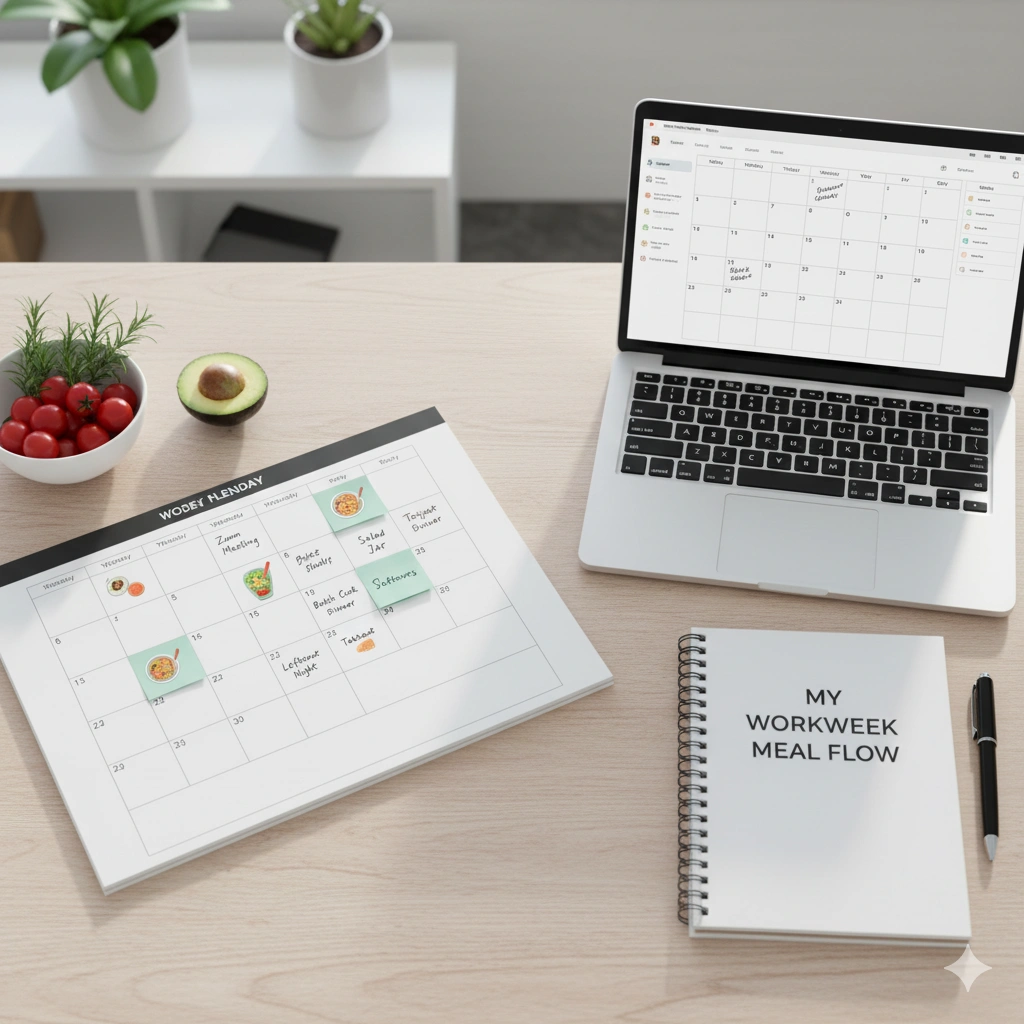
If Monday and Wednesday are your busiest days, don’t plan a full dinner. Go light — something like a stir-fry or even cereal and fruit.
On slower days like Tuesday or Thursday, batch a simple two-meal cook session that covers both lunch and dinner.
💡 Quick Tip: Schedule your takeout nights too — that’s still meal planning, just the honest kind.
The goal isn’t to eliminate restaurant food — it’s to control when and how it happens. Knowing your “planned cheat nights” keeps your wallet (and sanity) intact.
Even a loose workweek meal plan can make weekdays smoother and cut down on food decisions.
If you’re serious about improving your workweek meal plan, start by building from your actual schedule — not from Pinterest perfection.
👉 For grocery cost-cutting ideas, check out Smart Grocery Shopping Hacks That Cut Your Food Bill in Half.
The No-Microwave, No-Freezer Strategy
Not every office has a full kitchen — and not every pro wants to live off frozen pasta.
Here’s how to make desk-friendly meals that actually work for your week:
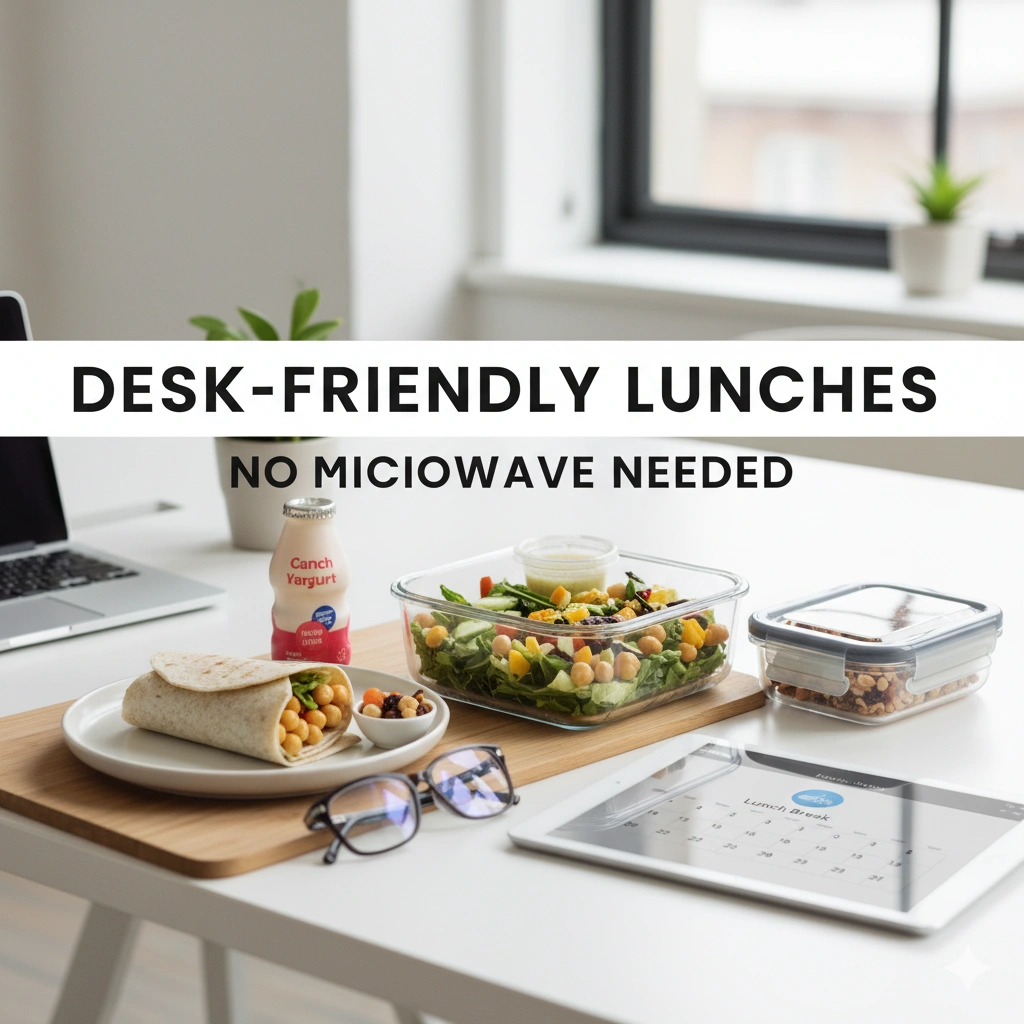
- Lunch ideas: salad jars with dressing on the side, chickpea wraps, tuna or chicken pouches with crackers, rice bowls with pre-cooked grains.
- Commuter snacks: nut packs, yogurt drinks, mini oatmeal cups, energy bites.
- Storage hack: one clear lunch box for all — easy to pack, easy to find.
If your schedule falls apart midweek (and it will), keep one or two emergency meals in your work bag — something shelf-stable you can grab without stress.
I learned this the hard way — once, I forgot lunch two days in a row and ended up eating a handful of granola from my desk drawer like survival rations. Not proud of it, but it taught me to always pack smarter.
Keeping commuter snacks in your bag means one less reason to grab overpriced food on the go.
⚠️ Too strict plans usually collapse by Wednesday. Build for imperfection — not for Instagram.
For lunch ideas, check out Cleveland Clinic’s Healthy Lunch Ideas for Busy Days (health.clevelandclinic.org) — quick, practical meals you can prep ahead.
(If you’re curious about freezer-safe strategies, see Beginner’s Guide to Freezer Meals That Save Time and Money.)
10-Minute Weeknight Dinners (No Oven, No Fuss)
You don’t need gourmet meals — you need quick healthy meals that save your evenings.
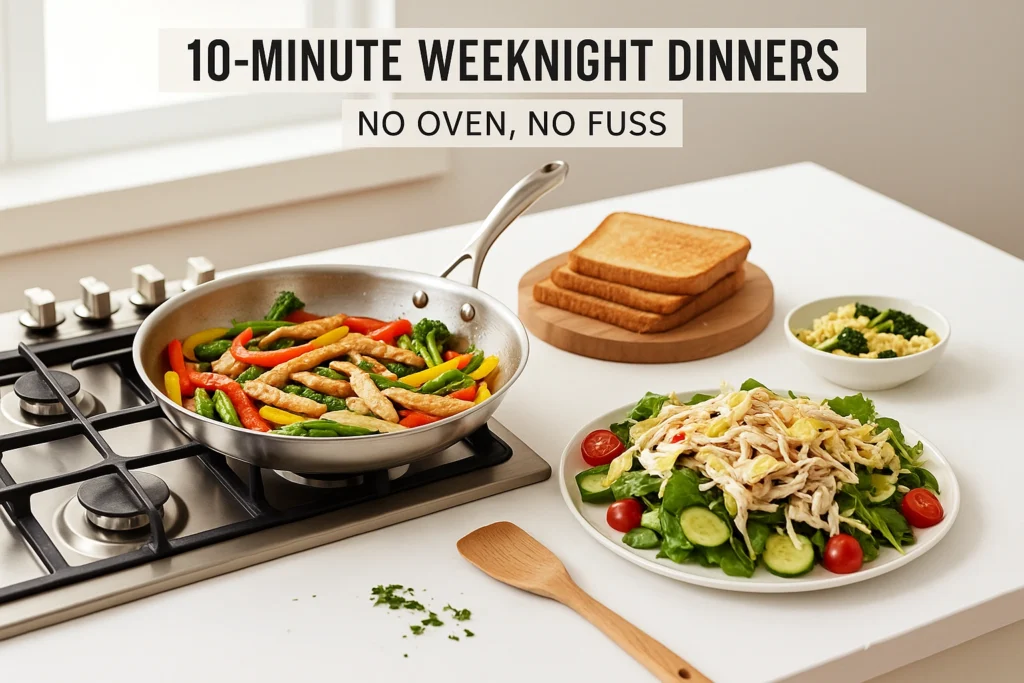
Here are some 10-minute dinners that keep things simple but satisfying:
- One-pan stir-fry with pre-cut veggies
- 10-minute skillet pasta with leftover protein
- Sheet salad: greens + cooked chicken + store-bought dressing
- Breakfast-for-dinner: eggs, toast, and frozen spinach sautéed
🍳 Quick Tip: If you’re exhausted, even cereal counts. Consistency beats creativity.
If you stick to a few quick healthy meals, you’ll save both time and energy without sacrificing flavor.
(For more healthy, budget-friendly meal ideas, see Healthy Meal Planning on a Budget.)
Balance Convenience and Nutrition
Here’s where most people give up — when planning feels like pressure, not relief.
Meal planning isn’t about counting calories — it’s about energy management.
Don’t aim for perfect macros; aim for meals that keep you fueled and focused throughout your workday.
Think of your meals as mini recharge points during the day.
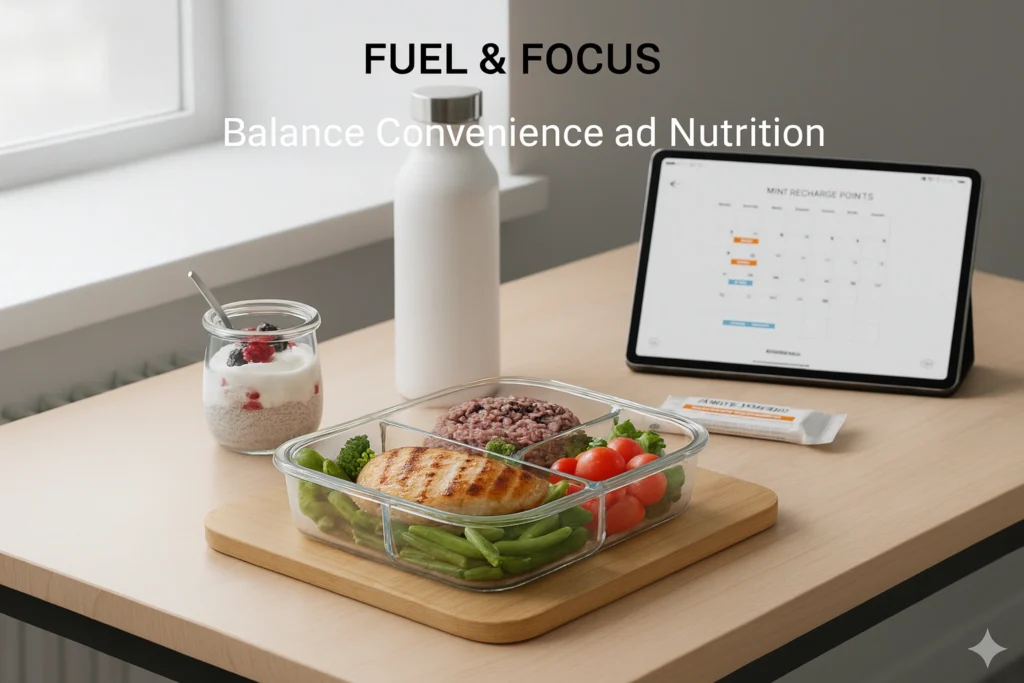
Protein-rich snacks and balanced carbs can make the difference between a focused afternoon and a 3 p.m. crash.
If your energy dips, don’t blame your willpower — adjust your workweek meal plan so your food supports your schedule, not the other way around.
In my early attempts, I treated meal planning like a performance — if I missed one prep session, I’d scrap the whole week. That’s the biggest trap: thinking consistency means perfection. The truth is, a 70% plan executed calmly beats a 100% plan that burns you out by Wednesday.
(Decision fatigue is a real phenomenon — see Decision Fatigue: A Conceptual Analysis (pmc.ncbi.nlm.nih.gov) for how repeated decision-making affects focus and self-control.)
The $3 Desk Lunch Framework
Let’s do the math: the average lunch out costs $15.
Your homemade desk lunch? Around $3.
Here’s a simple $3 lunch formula anyone can follow:
Protein + Grain + Veggie + Flavor.
Examples:
- Tuna + brown rice + olives + spicy mayo
- Chickpeas + couscous + spinach + honey mustard
- Rotisserie chicken + quinoa + pickle mix
💡 Quick Tip: Budget flexibility is what keeps meal planning sustainable.
And yes, grabbing sushi with coworkers once or twice a week is absolutely fine — just plan it in.
By building predictable lunches, you save both time and mental energy — exactly what busy professionals need more of.
Even better, a simple meal prep strategy like this creates rhythm — one you can actually keep up with every week.
Hybrid Workday Meal Systems
If you split time between home and office, treat each environment differently.
Office days: “Grab & Go” lunches and commuter snacks that survive the commute.
Home days: Cook once and double up — reuse for lunches.
Hybrid hack: Add “meal prep” blocks to your calendar (same way you’d book a meeting).
Some weeks you’ll cook less — and that’s perfectly fine.
Meal planning should adapt to you, not the other way around.
👉 (See Hybrid Work Productivity: How to Stay Focused Between Home and Office for more on balancing your work rhythm.)
Quick Tip: Keep commuter snacks handy — it’s the difference between powering through or hitting the vending machine.
This is where planning meets real life — your meals move with you, not against you.
That’s the beauty of a flexible workweek meal plan for busy professionals.
Troubleshooting: When Plans Fall Apart
You’ll have weeks where nothing goes right — and that’s okay. The trick is to plan for chaos, not perfection.
Your week will go off-track. Guaranteed.
Late meeting? Commute delay? Dinner with clients?
Don’t stress — just have a fallback.
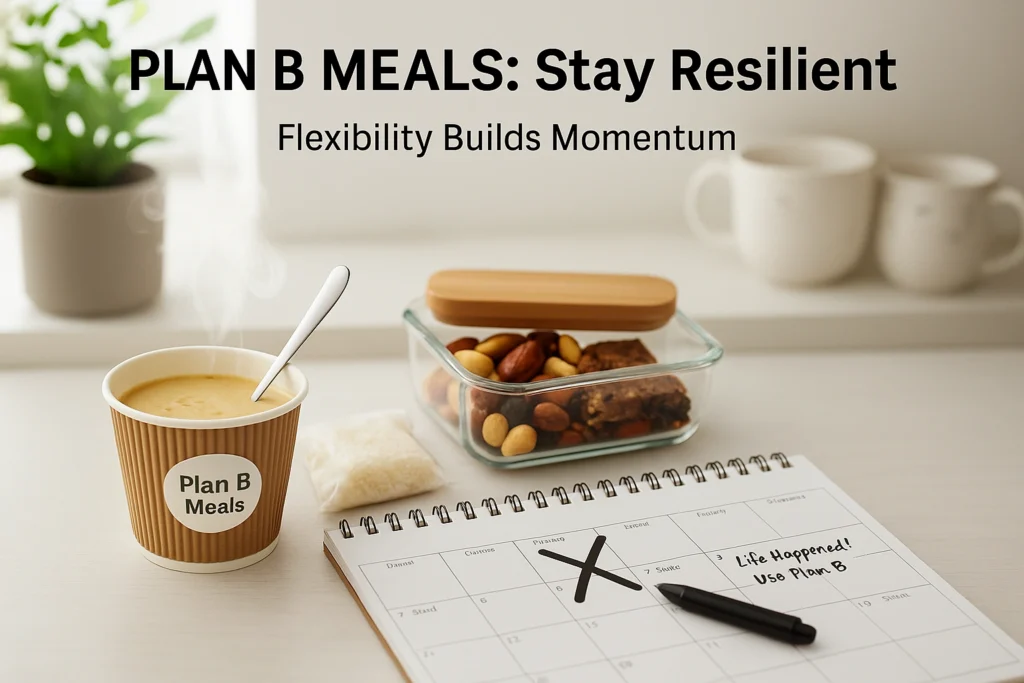
Plan B Meals: instant soups, microwave-free rice cups, or pre-packed snacks.
Skip-Day Rule: If you miss a prep day, don’t restart — just restart the next meal.
The goal isn’t perfection. It’s resilience.
🍴 Meal planning isn’t a test — it’s a toolkit.
(If you often struggle with staying consistent, see Time Management Tips for Side Hustlers for mindset overlap.)
When Meal Planning Feels Like a Chore
Let’s be honest — some weeks, meal planning feels like another job.
And that’s okay. You’re not failing; you’re just human.
Some Sundays, I still skip meal prep completely. I’ll grab takeout, put on a show, and reset the next day. It’s not failure — it’s balance.
Last month, I planned five dinners, cooked two, and improvised sandwiches the rest of the week. But here’s what’s different now — I don’t quit the system. I just reset. Each small restart builds resilience, not failure.
Too much rigidity leads to burnout. So loosen up a little:
- Allow 1–2 takeout nights per week.
- Keep one day completely plan-free — eat what feels right.
Your simple meal prep routine doesn’t have to be fancy — it just has to be consistent.
Because in the end, meal planning for busy professionals isn’t about rules — it’s about routines that last.
Remember: perfection kills momentum; flexibility builds it.
💡 Quick Tip: “Meal planning is like budgeting — leave room to breathe.”
Quick Toolkit for Busy Professionals
Use tools that do the thinking for you:
- Apps: Mealime, Yummly, or Notion templates.
- Automation: Google Calendar meal slots, shared grocery lists, Paprika recipe manager.
- Mindset: Plan less, adjust more.
Think of this as your digital sous-chef — a quiet helper that keeps your fridge on schedule.
These tools keep your simple meal prep consistent — even when your schedule isn’t.
(Also see Digital Tools Every Side Hustler Should Use to Save Time for more productivity apps.)
Conclusion – Simplify, Don’t Sacrifice
You don’t need a perfect system — just one that fits your real life.
Your meals don’t have to be Instagram-worthy; they just need to work.
Good meal planning should feel calm, not complicated.
If it feels like a grind, you’re doing too much.
The point of meal planning isn’t control — it’s comfort. The kind that lets you come home, open the fridge, and feel like you’ve already done yourself a favor.
So if your last plan fell apart, that’s okay — start again this Sunday.
Pick three meals, not seven. One grocery run, not perfection.
You don’t need to master meal planning — you just need to return to it.
🥄 Your next win might just be dinner tomorrow.
That small win is how every big habit begins.
This Week’s Challenge
- Plan 3 meals you can actually cook — not 7.
- Block 30 minutes for prep (calendar, not mindset).
- Leave 1 day open for “whatever works.”
Come back next week and adjust — not rebuild. That’s real progress.
👉 If you’re rethinking your daily rhythm, check out The Morning Routine for Productivity.

